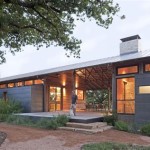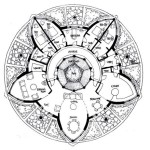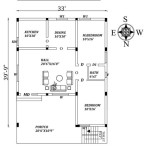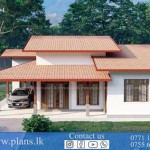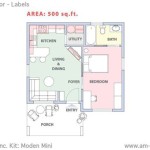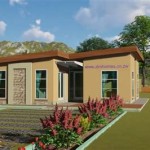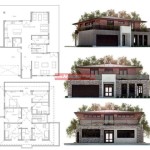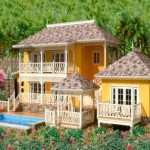Tree House Plans To Live In: A Comprehensive Guide
The concept of living in a tree house, once relegated to childhood fantasy, has evolved into a viable and increasingly attractive housing option. These elevated dwellings, offering unique perspectives and a close connection with nature, are attracting attention from individuals seeking alternative lifestyles and eco-friendly living solutions. Successfully constructing a habitable tree house requires meticulous planning, adherence to safety standards, and a thorough understanding of structural engineering principles.
This article provides a comprehensive overview of the key considerations involved in developing tree house plans intended for full-time residency. It explores the essential elements, from initial design to structural support, ensuring a safe, comfortable, and sustainable living environment elevated amongst the trees. Understanding the complexities of tree physiology, local building codes, and sustainable construction practices is paramount for the successful realization of a livable tree house.
Key Point 1: Site Selection and Tree Assessment
The cornerstone of any successful tree house project lies in careful site selection and a comprehensive assessment of the host tree(s). This process involves identifying suitable trees capable of supporting the intended structure, evaluating their health and structural integrity, and considering environmental factors such as wind load and potential growth impact.
The selection process should prioritize mature, healthy trees with robust branching structures. Species known for their longevity, strength, and resistance to decay are generally preferred. Examples include oak, maple, and redwood (depending on the geographical location). It is imperative to consult with a qualified arborist to conduct a thorough assessment of the tree(s). This assessment should include a visual inspection for signs of disease, decay, or structural weaknesses, as well as a soil analysis to determine the health and stability of the root system.
The arborist will also evaluate the tree's growth rate and potential future size, which can significantly impact the tree house design and longevity. Considerations such as the tree's canopy spread, trunk diameter, and branching patterns will influence the placement and size of the tree house platform and supporting structures. Understanding the tree's natural sway and movement in response to wind is also crucial for ensuring the tree house's structural stability and minimizing stress on the trees.
Beyond the health of the trees, site selection involves evaluating the surrounding environment. Sunlight exposure, drainage, and proximity to utilities need to be considered. Adequate sunlight is essential for natural lighting and ventilation within the tree house, while proper drainage is crucial for preventing moisture buildup and promoting tree health. Access to water and electricity is also a practical requirement for a habitable tree house.
Finally, adherence to local building codes and zoning regulations is critical. Many municipalities have specific requirements for tree house construction, including height restrictions, setback requirements, and environmental protection measures. Failure to comply with these regulations can result in costly fines or even the forced removal of the structure.
Key Point 2: Structural Design and Support Systems
The structural design of a livable tree house is significantly more complex than that of a recreational tree house. It necessitates a robust and adaptable support system capable of handling the weight of the structure, its occupants, and any furnishings, while minimizing stress on the host tree(s). A structural engineer with experience in tree house construction is essential for developing a safe and sustainable design.
Traditional tree house construction methods often involve directly bolting or nailing platforms to the tree trunks, which can cause damage to the tree's vascular system and impede its growth. Modern tree house design prioritizes non-invasive attachment methods that allow the tree to move and grow naturally. These methods include:
- Garnier Limbs (GALs): These are custom-engineered bolts that are inserted into pre-drilled holes in the tree trunk. The GALs are designed to accommodate the tree's growth and movement, minimizing stress and preventing damage.
- Suspension Systems: These systems utilize cables or ropes suspended from the tree branches to support the platform. Suspension systems are particularly useful for larger platforms and can distribute the weight more evenly across multiple branches.
- Floating Platforms: These platforms are supported by a combination of tree attachment points and ground-based supports. This approach is often used when the desired size of the tree house exceeds the capacity of the trees to support the entire weight.
The choice of support system will depend on the size and design of the tree house, the species and health of the trees, and the local environmental conditions. The structural engineer will perform load calculations to determine the appropriate size and spacing of the support members, ensuring that the tree house can withstand wind loads, snow loads, and the weight of its occupants and contents.
The materials used in the construction of the tree house should be chosen for their strength, durability, and resistance to the elements. Pressure-treated lumber, steel, and composite materials are commonly used for structural components. The design should also incorporate features that allow for drainage and ventilation, preventing moisture buildup and promoting the longevity of the structure.
Furthermore, the design should consider the dynamic nature of trees. Trees sway in the wind, grow over time, and shed branches. The structural design must accommodate these movements to prevent stress on the tree house and the trees themselves. Flexible connections, sliding joints, and adjustable supports can help to mitigate the effects of tree movement. Regular inspections and maintenance are essential to ensure the integrity of the support system and prevent any potential problems.
Key Point 3: Design Considerations for Habitable Tree Houses
Designing a tree house for full-time residency requires careful consideration of functionality, comfort, and sustainability. The design should incorporate essential living spaces, such as a bedroom, bathroom, kitchen, and living area, while maximizing natural light and ventilation. Accessibility, insulation, and environmental impact should also be prioritized.
Space planning is crucial in a tree house environment, where space is often limited. Efficient layouts and multi-functional furniture can help to maximize the usable space. Vertically oriented designs, such as lofts or bunk beds, can free up floor space for other activities. The use of built-in storage solutions can also help to minimize clutter and maximize organization.
Natural light and ventilation are essential for creating a comfortable and healthy living environment. Large windows and skylights can bring in natural light and reduce the need for artificial lighting. Operable windows and vents can provide natural ventilation, helping to regulate temperature and prevent moisture buildup. The design should also consider the orientation of the tree house to maximize sunlight exposure in the winter and minimize it in the summer.
Insulation is critical for maintaining a comfortable temperature inside the tree house, especially in colder climates. Proper insulation can reduce energy consumption and prevent drafts. Sustainable insulation materials, such as recycled denim or cellulose, can minimize the environmental impact of the construction.
Accessibility is another important consideration, particularly for individuals with mobility limitations. Ramps, stairs with handrails, or even elevators can be incorporated into the design to provide access to the tree house. It is important to ensure that the access route is safe and well-lit, especially at night.
The environmental impact of the tree house construction should be minimized. Sustainable building materials should be used whenever possible, and construction practices should be environmentally responsible. Waste materials should be recycled or reused, and the impact on the surrounding ecosystem should be minimized. Considerations should be made for composting toilets and greywater recycling systems to reduce water consumption and waste generation. Rainwater harvesting and solar panels can reduce the reliance on municipal water and power systems, further minimizing the environmental footprint of the tree house.
Furthermore, designing for a long-term habitable tree house necessitates careful selection of interior finishes and fixtures. Durable, low-maintenance materials that are resistant to moisture and pests are preferred. Considerations for fire safety, including fire-resistant materials and smoke detectors, are paramount. Thoughtful planning and execution are paramount to creating a secure, functional, and sustainable living space in the trees.
Security measures should also be considered. Installing security cameras, motion sensors, and alarm systems can help to deter intruders and provide peace of mind. It is also important to maintain the surrounding vegetation to prevent overgrown areas that could provide cover for potential intruders.

Would You Live In These Treehouse Cabins Tree House Designs Plans

Tree House Ideas To Inspire You Forbes Home

13 Simple Treehouse Ideas You Can Build For Your Kids This Weekend Easy To Expert Levels Trees Com

Modern Tree Living Creative Treehouse Designs Plans Ideas On Dornob

Tree House Ideas To Inspire You Forbes Home

Tree House Ideas To Inspire You Forbes Home

26 Best Treehouse Ideas For Kids Cool Diy Tree House Designs

My Life Goal Is To Live In A Tree House Designs Cool Houses Simple

26 Best Treehouse Ideas For Kids Cool Diy Tree House Designs

8 Tips For Building A Treehouse Family Handyman

